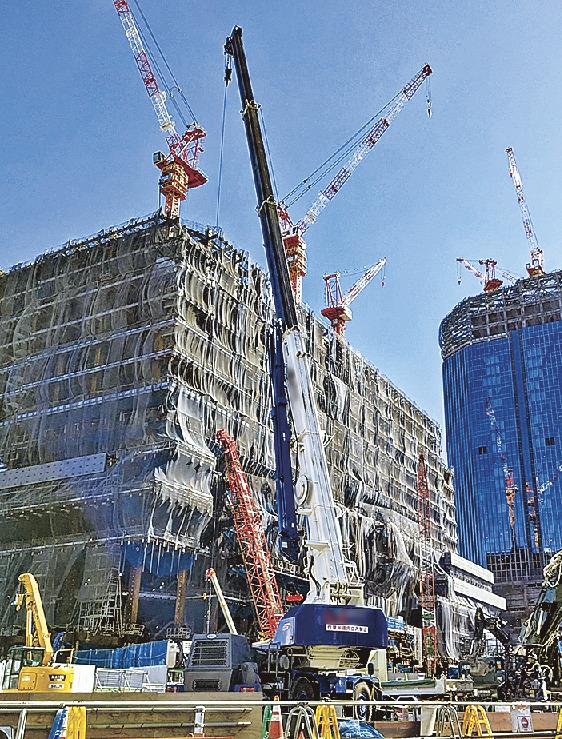Reforms to the way mobile crane operators work are likely to have an impact on customers, main contractors and specialist construction companies. To accommodate the introduction of the penalty overtime limit, starting in April, regular working hours will be set, including travel time to the site (an average of two hours per person). round). If the actual operating time at the construction site is shortened, this will not only affect the progress of other types of work using cranes but also affect the entire construction process and time. Yuichi Shibasaki, President of the National Crane Construction Industry Association (Zenkukyo), appealed, ``I want you to consider the health of the operators and the safety of the construction site, and consider the situation Actual situation of crane construction industry. .''

On-site work using mobile cranes has many overtime tasks such as forwarding (not related to the main document)
According to a survey conducted by Zenkoku Kyokai (June 2023) of operators at member companies, the national average time for a round trip from the crane storage area to the work site is one hour 47 minutes. It takes more than 2 hours in the three major metropolitan areas and Hokkaido, and 3 hours and 25 minutes in the Saitama area. This area is particularly affected by road congestion. The national average for overtime per month is 57 hours and 21 minutes, which exceeds the upper limit of 45 hours per month.

President Shibasaki (center) and other executives of the Zenkaku Association complain about the plight of the crane construction industry.
In addition to transit time, time is also needed for pre-departure inspections, on-site preparations such as outrigger extension and crane installation, and for cleanup.
Due to the special nature of the work involved in crane construction, several years ago the industry implemented special measures to reduce transportation time by approximately two hours, including transportation time and deadlines. Limit annual overtime to 960 hours, the same as for car driving, to comply with laws and regulations. It is requested by.
However, in response to the government's conclusion that it would not approve special measures, many branches of Zenkoku Kyokai and construction heavy equipment cooperatives, mainly in the Tokyo metropolitan area, decided to implement take measures to comply with the law. Basic working hours requirements of self-propelled cranes used for transportation on the same working day are from 8:00 am to 3:00 pm (lunch break: from noon to 1:00 pm). I'm looking.
A senior member of Zenkoku Kyokai, who asked the Ministry of Land, Infrastructure, Transport and Tourism, organizations and main contractor companies to cooperate to shorten working time, said: “ Although they have shown understanding of our situation, there is still “The impact of shorter crane working times on many types of jobs and processes will be significant,” he said. said, expressing a sense of crisis.
Regarding the gear change system to reduce overtime, it is said that in addition to the lack of drivers, taking turns driving unfamiliar vehicles is also difficult due to differences in model size and performance. . As workplaces and customers change daily, Zenku said, it can be ensured that customers understand that “overtime at work cannot be done in the second half of the month because the overtime hours have reached the upper limit.” ”. -kyo CEO.
The impact of recent price increases has also been severe. In addition to fuel, prices of consumer goods such as tires have also skyrocketed, with fewer operating days expected from April onwards and daily machinery losses also increasing. The business environment for the crane construction industry has become even more difficult due to factors such as rising truck prices and operator wages.
Executives at Zenkoku Kyokai agree: ``It is not easy to convince customers to agree to increase unit prices while shortening on-site working time.'' Cooperation from all parties involved is needed, including investors, main contractors and specialized construction companies.






